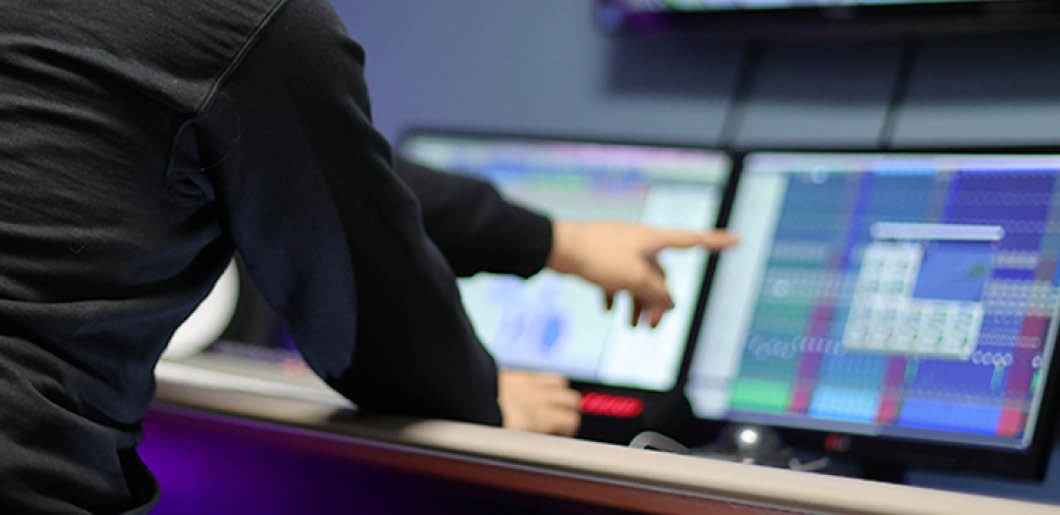
A snapshot of different roles in Audio Post-Production | Trebas Institute
In the music industry, audio post-production is a whole different field in itself. It includes many processes such as mastering and mixing. All these techniques combined are known as music post-production. Reworking and enhancing voice-based media is widely prevalent in the form of volume normalization and noise reduction.
Interested in working in the music post-production field and want to understand what is audio post-production? Read on to find out the different audio post-production jobs that you can explore in this industry.
1. Sound Supervisor
One of the most central roles in the post-production sound process is the sound supervisor, who is responsible for overseeing every member working in the sound production team. Their responsibilities include managing budgets, ensuring that the crew are working efficiently and in a timely manner, and maintaining regular communication with directors and producers about the progress of the sound team.
The sound supervising editor may handle many tasks at once, depending on the size of the production at hand. They are also often required to record sound effect libraries and work closely with the foley team, dialog editing, music, ASR, as well as the re-recording mixing teams. Several sound supervisors started their career as engineers who have worked on a wide range of projects in the industry.
2. Sound Design
Sound designers are the professionals responsible for creating sound effects for movies. Their job involves everything from ambience, like spaceship sounds, to hard SFX or room tones. Hard SFX implies the over-the-top sound effects that we hear on screen such as explosions, fights, car crashes etc., or any sound effect that falls outside the purview of regular ambiences.
3. Foley
After handling the dialog tracks, comes the work of foley artists and sound designers to take the creativity up a notch. They are responsible for creating and capturing all types of human sound movements that we expect to hear in a natural world. Some of the common types of foleys are the sounds of footsteps, hands brushing against clothes, lighting a cigarette, the sound of a zipper or the opening of an umbrella, for example. These sounds are rarely captured accurately during the production and, therefore, they need to be created by foley artists.
4. Production Dialog Editing
The first step towards a film’s audio is producing its dialog recording. This step is followed by intense editing and mixing. During this phase, the production audio or the audio recorded on set is prepared and then edited. It involves going through every bit of audio that’s getting recorded on the camera during the time of the shoot. In most cases, there will be additional audio recorded by a sound recordist. All these recordings need to be logged as well as organized in an efficient way, and, at this critical stage, it is determined how much of the audio can be used.
5. ADR
ADR stands for “Automated Dialogue Replacement” and this technique is applied when the audio of the production track is of low quality and needs replacement. Dialogues may often need replacement due to many reasons - like background noise, the wind, traffic, people talking and so on. ADR is a very common and integral step during the post-production phase. There is an appointed ADR supervisor who is responsible for producing and directing these additional dialog recordings. Actors are often invited back into the studio to read their lines again and sync the sounds with the moving images, a process referred to as looping.
6. Composing
Music composers compose music in such a way that it becomes an integral part of the narrative, like another character in the film. A music composer usually follows the script written by the director and the editor. A music editor has to learn parts of the composer’s job in order to efficiently do their own role. This is because music composition and editing are interwoven in the entire musical production process.
7. Music Editing
A music editor serves as an intermediary between the music supervisor, composer, director and picture editor, and is responsible for ensuring that the tone and flow of a movie’s music track is aligned with the overall vision of the director. Music editors usually start work with the development of a temp track, consisting of pre-existing music. The temp track serves as a guideline for the music composer. The music editor also has other duties like the development of a click-track for the musicians, composer and conductor in order to ensure precise timing. Music editors are present at mixing and recording sessions and are responsible for introducing changes to the music track.
8. Re-Recording Mixer
Once all the above aspects are completed, the next step is to balance out and mix down everything to give it a final shape. This is where the job of the re-recording mixer engineers comes into effect. Directors and other management executives often remain present when final requests or changes are brought to life.
FAQS
Looking for excellent audio post-production programs and the right institute to earn your degree from? Check out the programs offered by the Trebas Institute. These programs are taught by experts who help students hone the latest industry skills and gain an edge in their respective industries after graduation. Trebas has taught more than 3,000 graduates with a study body from over 40 countries, which makes the entire learning process a highly cultural experience.
Besides, you’ll be studying at vibrant locations like downtown Toronto or Montreal that offer extensive business links. Audio is a crucial component of the entertainment industry, whether it involves recording of a live performance or adding sound effects to a film. The Sound recording, Live Sound and Sound Design programs offered by Trebas ensure that students become experts in their fields and gain the expertise to work with industry-standard equipment and audio software. To learn more, click here.





